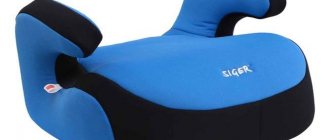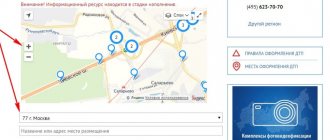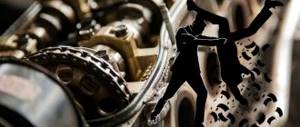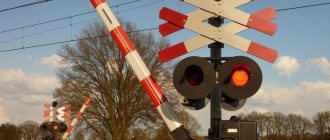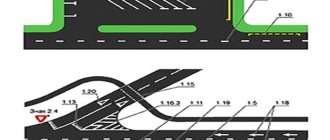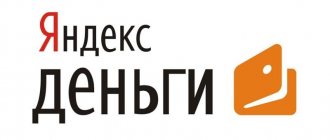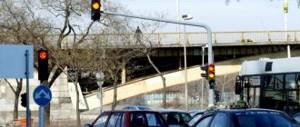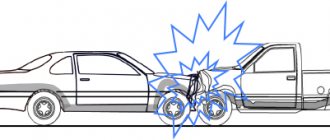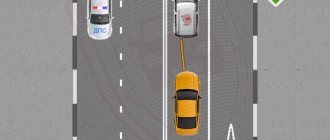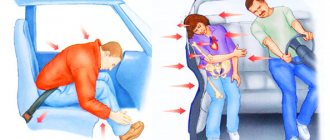Good afternoon, dear reader.
In early spring 2014, further changes to traffic rules were published, coming into force on April 8, 2014 . I would like to say right away that the number of changes is quite large and they affect almost all road users.
That is why today I am starting a new series of articles, “Traffic Rule Changes in April 2014.” The first article in the series will discuss: the changed section of basic concepts (the concepts of bicycle, moped, pedestrian, etc.), the need to have a license for a scooter, features of movement and stopping on lanes for two-wheeled vehicles.
As you most likely guessed, most of the changes to the traffic regulations on April 8 are aimed at introducing new traffic rules for cyclists. However, we will talk about the cyclists themselves in the next article. Today, we will primarily consider the updated rules for drivers of motor vehicles and pedestrians.
Once again, I emphasize that the changes under consideration affect almost all road users, so do not lose sight of them.
Bicycle concept
Consider the updated concept of “bicycle”:
“Bicycle” is a vehicle, other than wheelchairs, that has two or more wheels and is propelled by the muscular power of its occupants.
“Bicycle” is a vehicle, other than a wheelchair, which has at least two wheels and is generally propelled by the muscular energy of the occupants of the vehicle, in particular by means of pedals or handles, and may also have an electric motor of rated maximum power in continuous load mode not exceeding 0.25 kW, automatically switches off at speeds over 25 km/h.
“Cyclist” is a person driving a bicycle.
Please note that starting from April 8, 2014, a bicycle can have a low-power electric motor (up to 0.25 kW) with a maximum speed of 25 km/h.
I note that in practice I once had to communicate with the owner of a bicycle with an electric motor. He claimed that the engine accelerates the bike to 40 km/h. In accordance with the updated traffic rules (and the old ones too), such a vehicle is a moped, but this will be discussed below.
Again. In the new rules, the bicycle is propelled either by the muscular energy of the cyclist or by a small engine.
I’ll jump ahead a little and say that in the next article in the series we will discuss situations in which cyclists can ride on sidewalks (from April 8 this will be possible). So, if electric bicycles begin to “cut” en masse along the sidewalks at a speed of 25 km/h, then pedestrians will not be envied.
Bike path and lane for cyclists
Two new concepts are introduced into the traffic rules: a bicycle path and a lane for cyclists:
“Bicycle path” is a road element (or a separate road) structurally separated from the roadway and sidewalk, intended for the movement of cyclists and marked with sign 4.4.1.
“Lane for cyclists” is a lane of the roadway intended for the movement of cyclists and mopeds, separated from the rest of the roadway by horizontal markings and marked with sign 4.4.1 in combination with sign 8.14 located above the lane.
The bicycle path is indicated by sign 4.4.1:
The bicycle lane is indicated by a combination of signs 8.14 and 4.4.1:
Attention! In 2021, the bicycle lane is indicated by a different road sign (5.14.2).
Please note that the bicycle path is separated from the roadway and sidewalk structurally, for example, by a curb or fence. While the lane for cyclists is located directly on the roadway, and its boundaries are marked with markings.
The bicycle lane is intended only for the movement of bicycles, and in addition to bicycles, mopeds can also move along the bicycle lane.
In general, the concepts are similar. If you were unable to understand the differences the first time, then I recommend re-reading the above paragraph.
Another similar concept is a bicycle and pedestrian path :
“Pedestrian and bicycle path (pedestrian and bicycle path)” is a road element (or a separate road) structurally separated from the roadway, intended for the separate or joint movement of cyclists with pedestrians and indicated by signs 4.5.2 - 4.5.7.
The bicycle and pedestrian path is structurally separated from the roadway. Essentially, this is the same bike path along which, in addition to bicycles, pedestrians can also move.
There are 2 types of bicycle and pedestrian paths:
- with combined movement;
- with traffic separation.
On a mixed-use bicycle and pedestrian path, cyclists and pedestrians move interchangeably. The beginning of such a track is indicated by 4.5.2, and the end by 4.5.3:
On a segregated bicycle and pedestrian path, the flow of cyclists and pedestrians is separated from each other by markings or design. The beginning of such a track is indicated by 4.5.4 or 4.5.5, the end by 4.5.6 or 4.5.7:
Bike paths - the world, USA
All types of bike paths are used, for example, a map of New York bike paths. In the city, bicycles are widely used as transport.
Map of bike lanes in New York, PDF, 12 MB
Bike paths in New York
Source
To understand the situation with bicycles in NYC, two documents:
Bicycle in New York, official brochure in Russian, PDF, 2.7 Mb Source
Duties of a cyclist in Russian, PDF
Even after a quick glance at the map of New York's bike paths and materials for cyclists, it is clear that the city is systematically approaching the development of transport infrastructure.
Bike paths – the world, “one-story America”
In the USA, bicycle infrastructure is designed quite creatively, for example, in the state of Maryland, which is connected to the capital Washington by metro, a bicycle path to the city center was laid instead of dismantled tram tracks to the central part of the city. Bicycle paths are being built to replace the old railway
Pedestrian, footpath, sidewalk
“Pedestrian” is a person who is outside a vehicle on the road and is not working on it. Persons moving in wheelchairs without a motor, driving a bicycle, moped, motorcycle, carrying a sled, cart, baby stroller or wheelchair are considered pedestrians.
“Pedestrian” is a person who is outside a vehicle on the road or on a pedestrian or bicycle path and is not working on them. Pedestrians include persons moving in wheelchairs without a motor, driving a bicycle, moped, motorcycle, carrying a sled, cart, baby stroller or wheelchair, as well as using roller skates, scooters and other similar means for movement.
Starting from April 8, 2014, the rules clearly defined the status of people skating on roller skates. Now roller skaters are officially pedestrians , i.e. they cannot move along the roadway with cars. Roller skaters must move on sidewalks and pedestrian paths, and can cross the road at pedestrian crossings.
Most likely, this change is unpleasant for the skaters themselves, since, according to my observations, many of them like to skate on the roadways, where the quality of the asphalt is much higher.
Note. Starting from December 8, 2018, the concept of a pedestrian in the traffic rules has been changed.
“Pedestrian path” is a strip of land equipped or adapted for pedestrian traffic or the surface of an artificial structure, marked with sign 4.5.1.
“Pedestrian zone” is an area intended for pedestrian traffic, the beginning and end of which are indicated by signs 5.33 and 5.34, respectively.
The footpath and pedestrian zone are intended for pedestrian traffic only.
The pedestrian path is indicated by sign 4.5.1:
Pedestrian zone - signs 5.33 and 5.34:
“Sidewalk” is an element of the road intended for pedestrian traffic and adjacent to the roadway or separated from it by a lawn.
“Sidewalk” is an element of the road intended for pedestrian traffic and adjacent to the roadway or bicycle path or separated from them by a lawn.
Another element of the road intended for pedestrian traffic is the sidewalk . Starting from April 8, 2014, the sidewalk can be adjacent not only to the roadway, but also to the bicycle path.
Bicycle paths Moscow
Until 2012, in Moscow there were actually only spontaneous bicycle paths - in several parks, plus the Olympic sports cycling track in Krylatskoye. For the 40th anniversary of the Moscow Olympics in 2020, they decided to demolish it, the cycling community is fighting - photo from the July 25 rally in its defense, but money in Moscow usually wins.
The topic of bureaucratic cycling in Moscow is discussed in detail in the material:
Development of cycling infrastructure after 2012
Cyclist in Moscow – map of bike paths
Here I’ll just add that the main idea of cycling in Moscow is cycling infrastructure; bike paths are being developed at the expense of private cars.
No one is systematically working on the task of cycling (no one really needs it); most people promoting cycling do not use bicycles.
Thus, access to bicycles in the metro has been sharply tightened, which significantly hinders the development of bicycles as transport. In the medium to long term, personal mobility will be more developed than the bicycle. Plus, Moscow cycling has all the signs of a campaign - plans are constantly changing, the next change in plans was a consequence of the coronavirus epidemic.
Cyclist in Moscow - positioning the bicycle as a mass (all-season) transport - incompetence, criminal intent or what?
Bicycles in the metro - Moscow, Russia, the world - what is the meaning of access for cyclists in the metro and what does it show
Moped and moped license
of a moped has also changed significantly . Now a moped (scooter) is considered a power-driven vehicle:
“Motor driven vehicle” is a vehicle, other than a moped, driven by an engine. The term also applies to any tractors and self-propelled machines.
“Motor driven vehicle” is a vehicle driven by an engine. The term also applies to any tractors and self-propelled machines.
“Moped” is a two- or three-wheeled vehicle driven by an engine with a displacement of not more than 50 cubic meters. cm and having a maximum design speed of no more than 50 km/h. Bicycles with a suspended engine, mopeds and other vehicles with similar characteristics are considered mopeds.
“Moped” is a two- or three-wheeled mechanical vehicle, the maximum design speed of which does not exceed 50 km/h, having an internal combustion engine with a displacement not exceeding 50 cubic meters. cm, or an electric motor with a rated maximum power in continuous load mode of more than 0.25 kW and less than 4 kW.
Please note that mopeds now also include vehicles with an electric motor with a power of 0.25 kW to 4 kW.
Let me emphasize once again that mopeds are now mechanical vehicles.
Let me remind you that on November 8, 2013, licenses for mopeds were introduced in Russia. In addition, from April 1, 2014, new driver’s license forms containing category M were introduced.
In this regard, starting from April 8, 2014, scooter drivers must have a driving license with them:
2.1. The driver of a motor vehicle is obliged to:
2.1.1. Carry with you and, at the request of police officers, hand over to them for verification:
a driver's license or temporary permit to drive a vehicle of the appropriate category;
Those. starting from April 8, 2014, the driver may receive a fine for driving a moped or scooter without a license. The fine is 5,000 - 15,000 rubles.
The following changes have been made to paragraph 2.1.1 of the traffic rules:
2.1.1. Carry with you and, at the request of police officers, hand over to them for verification:
registration documents for this vehicle, and if there is a trailer, also for the trailer;
2.1.1. Carry with you and, at the request of police officers, hand over to them for verification:
registration documents for this vehicle (except for mopeds), and if there is a trailer, also for the trailer (except for trailers for mopeds);
Thus, moped drivers must present only their license to traffic police officers. They are not required to present registration documents. I note that although scooters and mopeds are now mechanical vehicles, they do not need to be registered with the traffic police:
1. Mechanical vehicles (except mopeds) and trailers must be registered with the State Road Safety Inspectorate of the Ministry of Internal Affairs of the Russian Federation or other bodies determined by the Government of the Russian Federation, during the validity period of the “Transit” registration plate or 10 days after their acquisition or customs clearance.
2. On motor vehicles (except for mopeds, trams and trolleybuses) and trailers, registration plates of the appropriate type must be installed in the places provided for this purpose, and on cars and buses, in addition, a license card must be placed in the lower right corner of the windshield in established cases .
Rooms for scooters and mopeds are also not provided.
Fines for violation
If you break the rule and step on the bike path, you can get a fine. It amounts to up to a thousand rubles, the amount of the fine depends on the person himself, whether he interfered with the cyclist. Drivers of cars and other vehicles are treated more harshly. Violators will pay about two thousand rubles.
The need to introduce bicycle lanes has arisen for a long time, as more and more people are switching to two-wheeled, environmentally friendly transport, which also helps to lose excess weight. There are few bicycle roads in Russia, but they are appearing more and more often.
These zones are marked with special signs that indicate to other road users that it is forbidden to enter the area for cyclists. If you break the rule, you can get a fine ranging from 500 rubles to two thousand. Didn't find the answer to your question? Find out how to solve exactly your problem - call right now:
+7 (Moscow) +7 (St. Petersburg)
It's fast and free!
Pedestrians on bicycle and pedestrian paths
4.1. Pedestrians must move on sidewalks or pedestrian paths, or, if there are none, along the roadsides. Pedestrians carrying or carrying bulky objects, as well as persons using non-motorized wheelchairs, may walk along the edge of the roadway if their movement on sidewalks or shoulders creates an obstacle for other pedestrians.
If there are no sidewalks, pedestrian paths or shoulders, or if it is impossible to move along them, pedestrians may move along a bicycle path or walk in a single file along the edge of the roadway (on roads with a dividing strip, along the outer edge of the roadway).
4.1. Pedestrians must move on sidewalks, pedestrian paths, bicycle and pedestrian paths, and, if there are none, along the roadsides. Pedestrians carrying or carrying bulky objects, as well as persons using non-motorized wheelchairs, may walk along the edge of the roadway if their movement on sidewalks or shoulders creates an obstacle for other pedestrians.
If there are no sidewalks, pedestrian paths, bicycle paths or shoulders, and also if it is impossible to move along them, pedestrians can move along a bicycle path or walk in one row along the edge of the roadway (on roads with a dividing strip - along the outer edge of the roadway).
The updated paragraph 4.1 of the rules puts bicycle and pedestrian paths on a par with sidewalks and pedestrian paths. Pedestrians must move along them. And only if there is no pedestrian path, no bicycle path, no sidewalk, no curb nearby, pedestrians can go onto the bicycle path or roadway.
Note. Starting from December 8, 2018, paragraph 4.1 of the traffic rules has been updated.
Standards for distance to other objects
In parks, SNiP (SP) regulates not only the width of bicycle routes. The standards also define the minimum distances between separate bicycle paths and other objects (in meters):
- Sidewalk – 0.5.
- The edge of the road is 0.75.
- Trees – 0.75.
- Car parking – 1.5.
- Stopping any type of transport – 1.5.
Sketch of a single-lane bike path
Regulations for the construction of bicycle paths ensure the safety of cyclists.
They reduce the risk of serious injury if you lose control and fall off your bike. Rules for designing bicycle paths also ensure the safety of pedestrians. The width of these tracks is an important indicator.
When a bike path crosses a water hazard in a park or forest park, a bridge must be built. The height of fencing on a bridge over a ditch, stream or ravine should be 1.3 m or more, regardless of the width of the crossing.
Driving a car in a bicycle lane
The updated clause 9.9 prohibits motor vehicles (except mopeds) from moving in a bicycle lane:
9.9. The movement of vehicles on dividing strips and shoulders, sidewalks and pedestrian paths is prohibited (except for the cases specified in paragraphs 12.1, 24.2 of the Rules). The movement of vehicles of road maintenance and utility services is allowed, as well as access along the shortest route for vehicles delivering cargo to trade and other enterprises and facilities located directly next to the roadsides, sidewalks or pedestrian paths, in the absence of other access options. At the same time, traffic safety must be ensured.
9.9. The movement of vehicles on dividing strips and shoulders, sidewalks and pedestrian paths is prohibited (except for the cases provided for in paragraphs 12.1, 24.2 - 24.4, 24.7, 25.2 of the Rules), as well as the movement of motor vehicles (except mopeds) on lanes for cyclists. The movement of motor vehicles on bicycle and bicycle-pedestrian paths is prohibited. The movement of vehicles of road maintenance and utility services is allowed, as well as access along the shortest route for vehicles delivering cargo to trade and other enterprises and facilities located directly next to the roadsides, sidewalks or pedestrian paths, in the absence of other access options. At the same time, traffic safety must be ensured.
As for bicycle and bicycle-pedestrian paths, the movement of all mechanical vehicles (including mopeds) is prohibited on them.
Let me summarize again for drivers of mopeds and scooters:
- You can ride in bicycle lanes;
- on bicycle and bicycle-pedestrian paths - not allowed.
